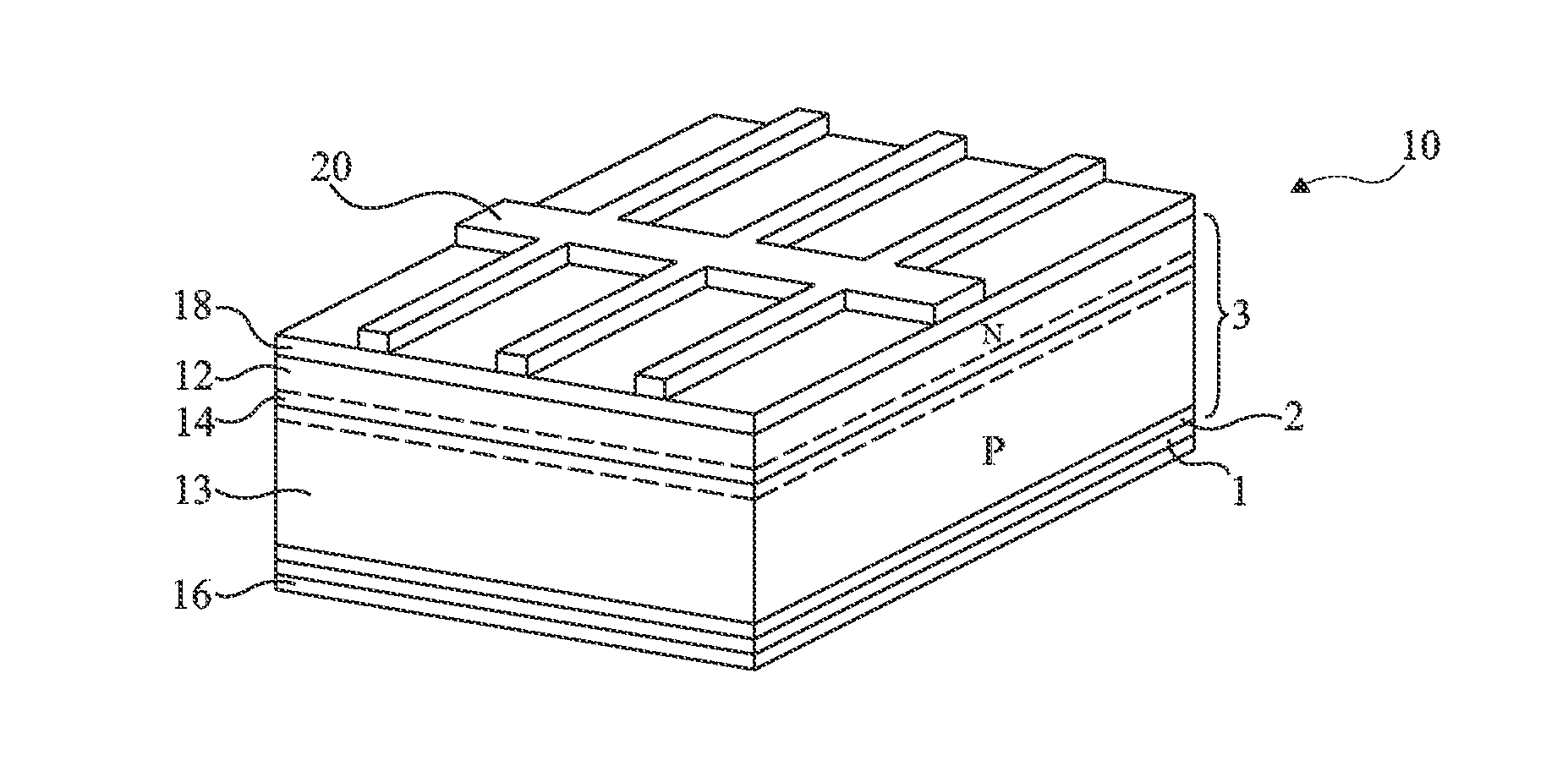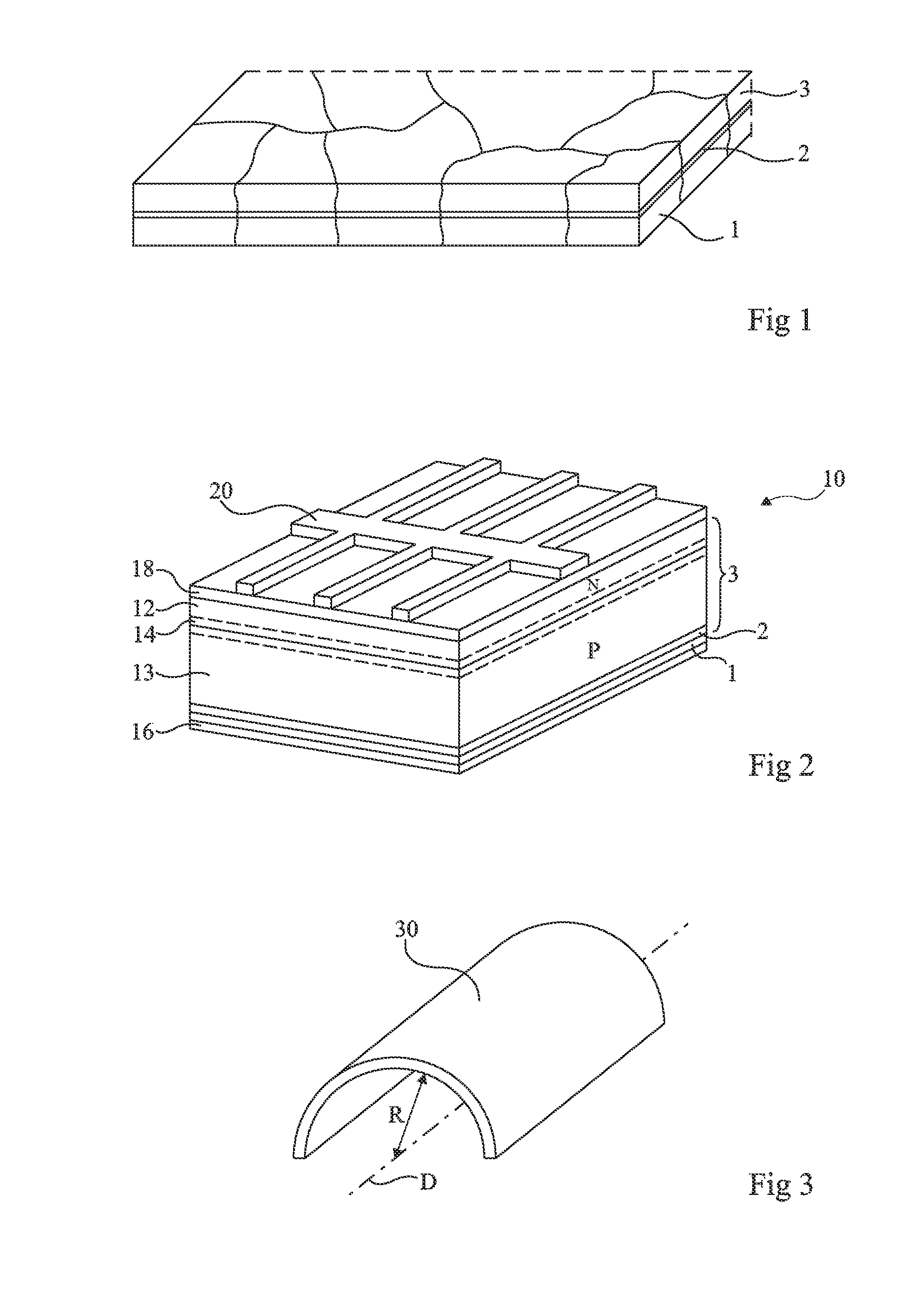Structure for forming solar cells
- Summary
- Abstract
- Description
- Claims
- Application Information
AI Technical Summary
Benefits of technology
Problems solved by technology
Method used
Image
Examples
Embodiment Construction
[0036]As illustrated in FIG. 1, a structure adapted to the forming of solar cells according to an embodiment of the present invention comprises, on a metal support 1, an electrically-conductive bather layer 2 and a multicrystal silicon layer, preferably doped as an electron acceptor (type P) 3.
[0037]Support 1 is a metal sheet having a sufficient thickness to ensure its mechanical hold, for example, a thickness greater than 100 μm. This sheet is formed from a structured metal, that is, a metal having crystal grains of relatively large dimension, for example, crystal grains having an average dimension greater than 50 μm, which may reach values ranging from 1 to 5 mm. An example of such a metal sheet is a stainless steel sheet, for example comprising a percentage of chromium approximately ranging from 15 to 25%. Such a product is commonly available for sale. The upper surface of this metal sheet is processed to be surface-deoxidized, for example, by a treatment with one or several acid...
PUM
| Property | Measurement | Unit |
|---|---|---|
| Temperature | aaaaa | aaaaa |
| Length | aaaaa | aaaaa |
| Length | aaaaa | aaaaa |
Abstract
Description
Claims
Application Information
 Login to View More
Login to View More - R&D
- Intellectual Property
- Life Sciences
- Materials
- Tech Scout
- Unparalleled Data Quality
- Higher Quality Content
- 60% Fewer Hallucinations
Browse by: Latest US Patents, China's latest patents, Technical Efficacy Thesaurus, Application Domain, Technology Topic, Popular Technical Reports.
© 2025 PatSnap. All rights reserved.Legal|Privacy policy|Modern Slavery Act Transparency Statement|Sitemap|About US| Contact US: help@patsnap.com


